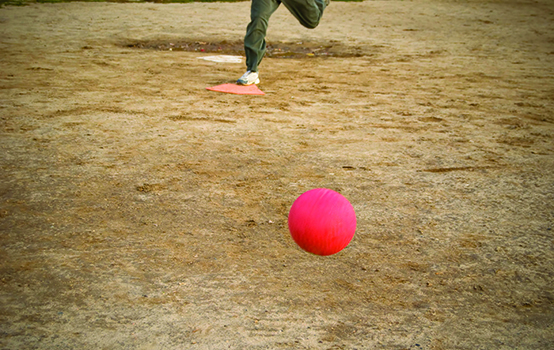An observant and understanding teacher helps a student who’s different from her peers.
I am a gay Latino educator, and I’ve been very much out of the closet among my friends, colleagues, and family ever since I started my career in 1979. However, during my 18 years as a public school teacher I never discussed my gay identity at work. I taught kindergarten through 5th grade in Los Angeles and San Francisco, and issues surrounding gender identity weren’t part of the overt curriculum, so it didn’t seem right to wear my “Nobody knows I’m gay!” T-shirt to school. But if I wasn’t going to teach explicitly about gay themes and issues, I decided that I could, at least, try to be sensitive to the special needs of my LGBTQ+ students and the concerns of LGBTQ+ families (of which there were many in the schools where I taught, particularly when I worked in San Francisco).
I’ve often wondered whether, and to what extent, my personal experiences as an out gay man have informed my work as an educator. Having learned to be comfortable in my own skin, did I gain an intuitive sense of what it takes to help young people become comfortable in theirs? Along with many other LGBTQ+ teachers I have known, I can’t help but understand what it means to feel vulnerable to society’s pressures to conform in an often hostile culture. Has that moved me, and other queer teachers, to be empathic toward and feel protective of my students, especially those who don’t conform to prevailing gender norms and expectations? If so, is there something about the experience of growing up queer that can inform the work of all teachers, helping them understand how to give students the space they need to come to their gender identities on their own terms, without fear?
Getting to know Saad
In 1997, when I was teaching 1st grade in San Francisco, I had the privilege of working with a student I will call Saad. She was a beautiful girl of Iraqi ancestry with amazingly thick, richly textured black hair; she had flawless skin, caramel-colored eyes, and a terrific smile. Although a little shy, Saad was a very happy, bright, and engaged student who was always willing to work with her classmates on any assignment and had a unique ability of calming other children who were near her. She liked reading storybooks about cats, and she was a very capable math student.
What made Saad a particularly interesting child was her manner of dress. She wore a kind of uniform: thick black hair cut very short, a plaid flannel shirt (usually blue or light green), blue jeans, and either hiking boots or black tennis shoes. The overall effect was more masculine than feminine — some people might say butch. Saad’s shirts had an almost military presentation, impeccably clean, with no creases or stains. Her hair was flawlessly combed, almost starched into place. Saad always stood erect and seemed poised when she walked into the room. In every respect, she was a gentle and dignified presence, almost like a soldier at a guardhouse. Needless to say, I thought Saad was adorable. I loved her ability to be at ease with herself.
Saad was the only daughter of a devoted and supportive single mother. When I asked Saad’s mother, during a parent-teacher conference, about her daughter’s dressing habits, she replied, “I just can’t get her to wear a dress. So I let her pick her clothes. She is very happy with her look, and I am glad she has you for a teacher. She talks about you all the time.” I understood Saad’s mother to mean she was glad I was her daughter’s teacher because I did not judge Saad’s dress or mannerisms. If anything, I celebrated them.
Whatever manner of self-expression Saad chose was fine because it was a natural part of her personality, and my responsibility as an inclusive teacher was to support her in her choices and to be her mentor.
I want to be clear that I didn’t know whether Saad might be straight, lesbian, transgender, or anything else, and it wasn’t my place to make any assumptions. However, it seemed clear to me that giving her the freedom to express herself without shame contributed to her general state of well-being, and if adults insisted that she wear more conventional girls’ clothes, that likely would have done more harm than good. Whatever manner of self-expression Saad chose was fine because it was a natural part of her personality, and my responsibility as an inclusive teacher was to support her in her choices and to be her mentor. In fact, if my primary role is to teach the curriculum, then allowing her space to be herself was the best thing I could do since it gave her more freedom to concentrate on her schoolwork.
Kickball time
When you are a 1st-grade teacher, you become a monitor of monitors. Managing a classroom often requires giving students special responsibilities that contribute to order and harmony in the group. In my own classroom, for example, I had a lunch count monitor, attendance monitor, line leader, door closer, light switch monitor, paper monitor, and on and on. Perhaps the most coveted position was ball monitor.
The boys loved being ball monitor because the ball monitor was also captain of the recess kickball team. These highly unorganized games were part of a running contest between my class and Room P-5, another 1st-grade class. When playing their game, the children made up teams and rules pretty much as they went along. Indeed, one of the more strenuous chores of a yard duty teacher was adjudicating kickball games because there was almost always a storm and stress about who kicked out of bounds, the order of kickers, points, and the rest. The boys of my class were always in some kind of funk about losing to P-5, but that never stopped them from playing because sometimes they won, too, and winning a game was the best.
Saad was the only girl in her class ever to ask me to be ball monitor. The other girls preferred to jump rope, or swing, or play chase-me games on the jungle gym. So one week I decided to make Saad the ball monitor, and she was overjoyed to finally hear her name called out for the coveted position. The boys said nothing while the girls cheered, “You go, Saad!”
At morning recess time, I excused the class to play, and Saad proudly walked out the door holding the well-used red utility ball in her arms like a newborn baby. But after recess, she was the last child in, still holding the ball in her arms, frowning, and seeming at the brink of tears. After reading time and just before lunch, I pulled her aside and asked how recess had gone. She looked at the floor for a bit before speaking softly. “The boys wouldn’t play kickball with me,” she said. “I asked them but they just ran away.” I could see she was holding back tears.
“Oh,” I replied, careful not to sound angry at the boys, “that’s a shame.” I leaned in closer to her and said, “I will go out with you tomorrow. We can practice kicks if you like.”
“You will?” said Saad.
“Yes,” I said. “That will be great.”
Saad gave me one her killer smiles, and I asked the class to get ready for lunch.
Having learned to be comfortable in my own skin, did I gain an intuitive sense of what it takes to help young people become comfortable in theirs?
Wrinkled shirttails
The following day, I was the last one out the door for morning recess. I made it a point to place Saad at the front of the line, and she led us out carrying the mighty kickball. She was anxious to practice her kicks. I found her at the west end of the playground and asked for the ball. “How do you want me to pitch the ball, fast or slow?”
“In the middle,” said Saad. I rolled in a middle pitch (which was hard to do because how does one gauge such things?), and she gave out a little yelp as she kicked a line drive that just missed hitting me in the face. “Whoa, Saad!” I yelled. “That was a great kick.” I chased the ball, returned to my place, and pitched again. Another great kick.
By the time Saad had a third great kick, a small crowd had gathered. “What are you doing, Mr. V?” the boys asked.
“I’m practicing kicks with Saad,” I said.
“Can we play?” the boys asked.
“Not today. Saad said she wanted to practice kicks today,” I replied.
I practiced with Saad for about five minutes before excusing myself. Saad thanked me and took the well-used utility ball up to the volleyball wall where she continued bouncing it. When the class returned from recess, Saad was smiling. I told her we would practice again tomorrow, which all the boys and girls duly noted.
The next day, I repeated the process from the day before, but when the boys asked if they could play, I asked Saad, “What do you think? Can the boys play kickball with you, Saad?”
Saad thought for a moment, looked around at the boys, and then said, “Yes!”
“OK, boys,” I said. “You each take turns practicing pitches with Saad. I am going to get a coffee before you all come back to class. Be good.”
“We will!” shouted the boys. “You have a nice Starbucks, Mr. V.” (I was little taken aback. Didn’t they know I drank Peet’s Coffee!?)
There was noticeable calm in Saad for the rest of the week. I didn’t bother to ask her how things were going on the playground because her demeanor spoke volumes. On the Friday of that week, the boys returned from morning recess all shouts and giggles. “What’s up, guys?” I asked.
“We beat P-5!” they shouted in unison.
“You did?!” I said. “How did that happen?”
“It was Saad,” said Enrique. “She really helped us.”
“Great!” I said. “Imagine that . . .”
The class began to settle on the rug when Saad walked in late, carrying the ball with her usual devotion. “Good job,” I said to her. She was a vision, hair all undone, and her wrinkled shirttails draped over her dirty blue jeans. The girls in the class said, “You go, Saad!” The smiles all around spoke volumes.
Citation: Valadez, G. (2018). Kickball: A gay teacher becomes an ally. Phi Delta Kappan, 100 (2), 32-34.
ABOUT THE AUTHOR

Gilbert Valadez
GILBERT VALADEZ is associate professor of Teaching and Learning in the School of Education at California State University at San Marcos.










